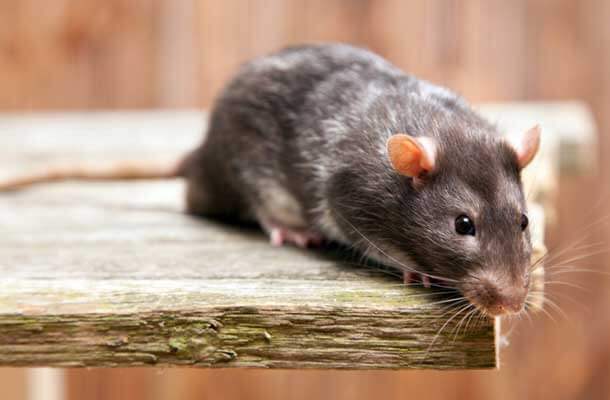There are around 7 billion rats in the world, which might explain why they say that you’re never more than six feet away from a rat.
Despite having many natural enemies, rats are sneaky and clever. They’re also highly adaptive and can live almost anywhere, including human homes. But for all their sneakiness, rats aren’t tidy and tend to leave a trail of telltale signs when they move in.
Of course, the faster you spot these signs of rats in your home, the faster you can get rid of your infestation with the help of licensed professional exterminators.
Here are five signs you have rats in your house.
1. Scratching Noises
Scratching noises coming from your walls is one of the first telltale signs that you could have rats indoors.
Since rats are nocturnal, these noises will be most prevalent at nighttime. They tend to take their opportunities to search for food when the house is quiet so you might hear them more when you’re in bed.
Rats often make their way into our homes through cracks and pipes. This makes attics, garages, and basements all prime entrance ways. And open food sources, clutter, and warmth all attract mice and rats.
2. Droppings
Rat droppings, or ‘pellets’, often resemble grains of rice but can vary depending on the particular species. In general, rat droppings are around half an inch long, while mice droppings are about half that size.
Fresh droppings are dark brown and soft, and they may stain surfaces if they’re crushed. As rat pellets age, they get brittle and often resemble clumps of dirt.
Rats aren’t fussy about where they deposit their droppings, so you may find them anywhere in your home. They even defecate while they’re on the go, so you may find trails against walls or the edges of furniture.
You might find droppingswherever they have their nest and wherever they eat, such as in your pantry, lower cupboards, and underproduce storage racks.
If and when you find droppings, don’t touch them. You should always let your rodent removal team handle rat droppings as they are an active safety hazard. Rat feces can spread diseases such as hantavirus, rat-bite fever, and even bubonic plague.
3. Gnaw Marks
A rat’s teeth never stop growing, so they have to keep gnawing away to ensure their teeth remain sharp and healthy. In fact, a key difference between rats and mice is that, while mice’s weaker teeth are limited to gnawing through food packets, rats will gnaw on almost anything.
Gnaw marks can be hard to spot at first.
Look for shredding and rough bite marks close to the ground on cardboard, plastic, bedding, furniture, and insulation. Rats also like to chew through electrical wiring so check behind your appliances for signs of this.
Another obvious thing rats will gnaw at is your food supply. Packets and bags of sugar, flour, pasta, rice, pet food, and cookies are all prime targets.
4. Greasy Track Marks
Although rats have advanced smell and hearing, they are colorblind and have poor eyesight. To compensate, they stick to the same routes to move around, often scurrying along pressed against walls and furniture as a way to sense and navigate around their location.
But since rats in your house use the same paths time and time again, they often leave behind track marks. Rat fur is covered in dirt, grease, and oil, so when they rub up against walls time and time again, they leave a greasy residue behind.
Look for rat track marks around the edges of your attic, basement, and pantry. You might also see droppings and urine stains along these paths.
5. Nests
Some of the chewing and gnaw marks you might see around your home could also be signs that rats have been collecting nesting material.
Rats build simple nests out of whatever they can lay their paws on. Inside your home, they’ll bite off bits of paper, fabric, and insulation and drag them to secluded corners to make their nests. They sometimes even make their way into walls or through insulation and build their nests there.
Rat nests will most likely look like a clump of garbage to you. But if there are droppings, dirt marks, or tracks nearby, these are all sure signs that the garbage you’re looking at is actually a nest.
Most rats indoors also tend to follow the same paths back to their nest each time. If you see other signs of a rat infestation, such as greasy marks, you may be able to follow them back to a well-hidden rat nest.
The Most Obvious Sign You Have Rats in Your Home
Of course, as well as these clear signs that you have rats in your home (as well as others, such as an unpleasant odor), there’s an even more obvious sign – you’ve seen one scurrying around the house.
And, since rats live in large groups to protect their young, you can almost guarantee that where there’s one rat, there’s more.
As soon as you spot any of these telltale signs, act fast and contact our team at Natura Pest Control to avoid a full-blown infestation.
Did You Know?
Rats generally live for around two years, though some can live longer. The takeaway? Don’t wait around for rats to go away on their own. They might be in it for the long haul!
FAQ
How do I know it’s rats indoors and not something else?
Rats leave pretty clear evidence if you know what to look for. Their droppings are bigger than mouse droppings (think raisin-sized, not rice). You might also notice gnaw marks on furniture or wires, or greasy smudges along walls where their furry bodies brushed by.
What’s the fastest way to get rid of rats indoors?
Start by sealing any cracks, gaps, or holes. Set traps strategically in areas you’ve seen activity (bait with peanut butter, they can’t resist). If you’re not getting results or the problem feels overwhelming, call a pest control pro to take things up a notch.
Are rats dangerous?
Besides chewing up your wires, rats can carry diseases that are a serious health risk. Their droppings, urine, and even body grease can contaminate your home.
How do I prevent rats from moving in?
Seal up entry points, no matter how small (rats can sneak through holes as tiny as a quarter). Keep your food sealed in airtight containers and be diligent about crumbs and trash. Outside, keep vegetation trimmed and eliminate any potential hiding or nesting spots.



